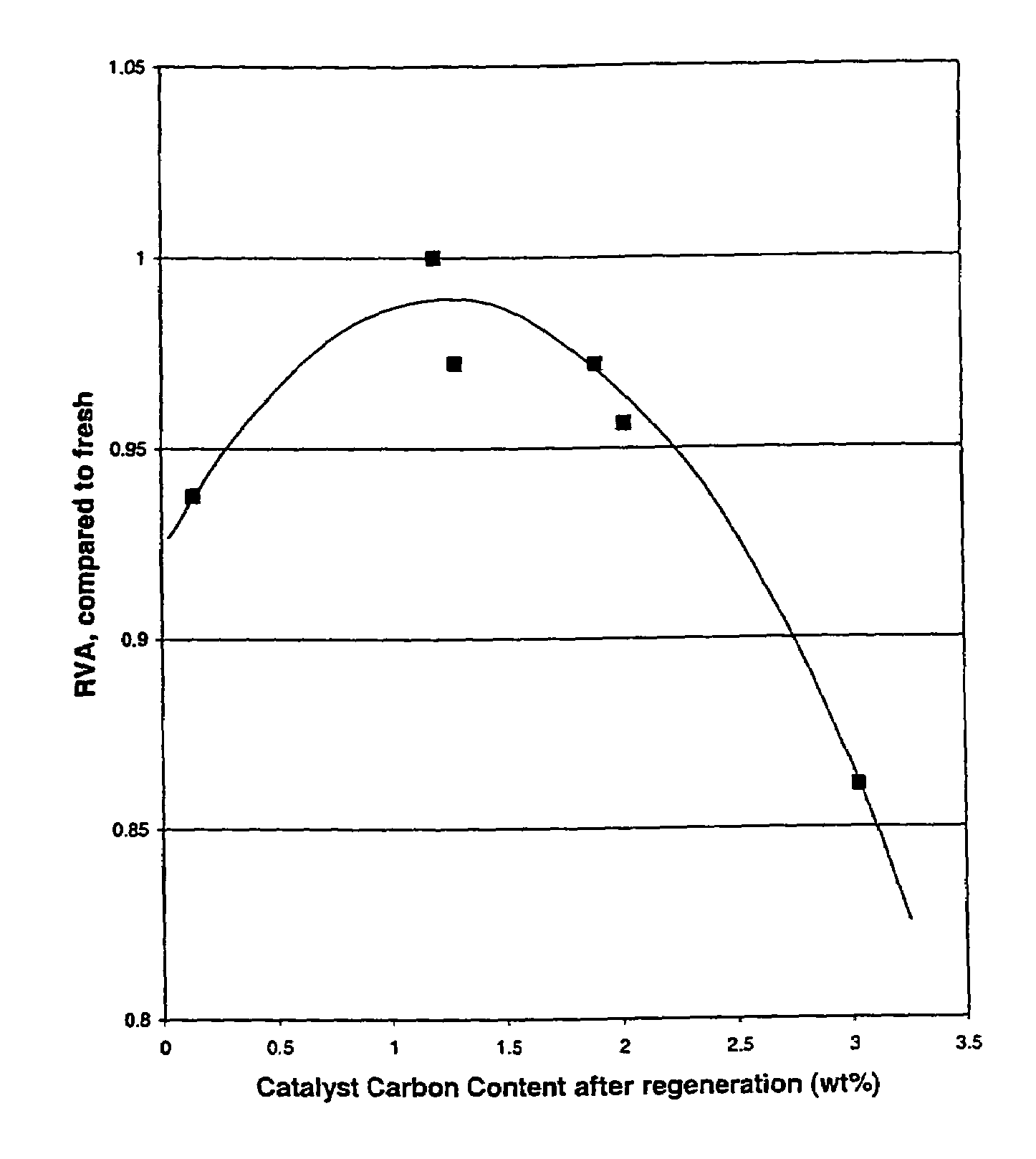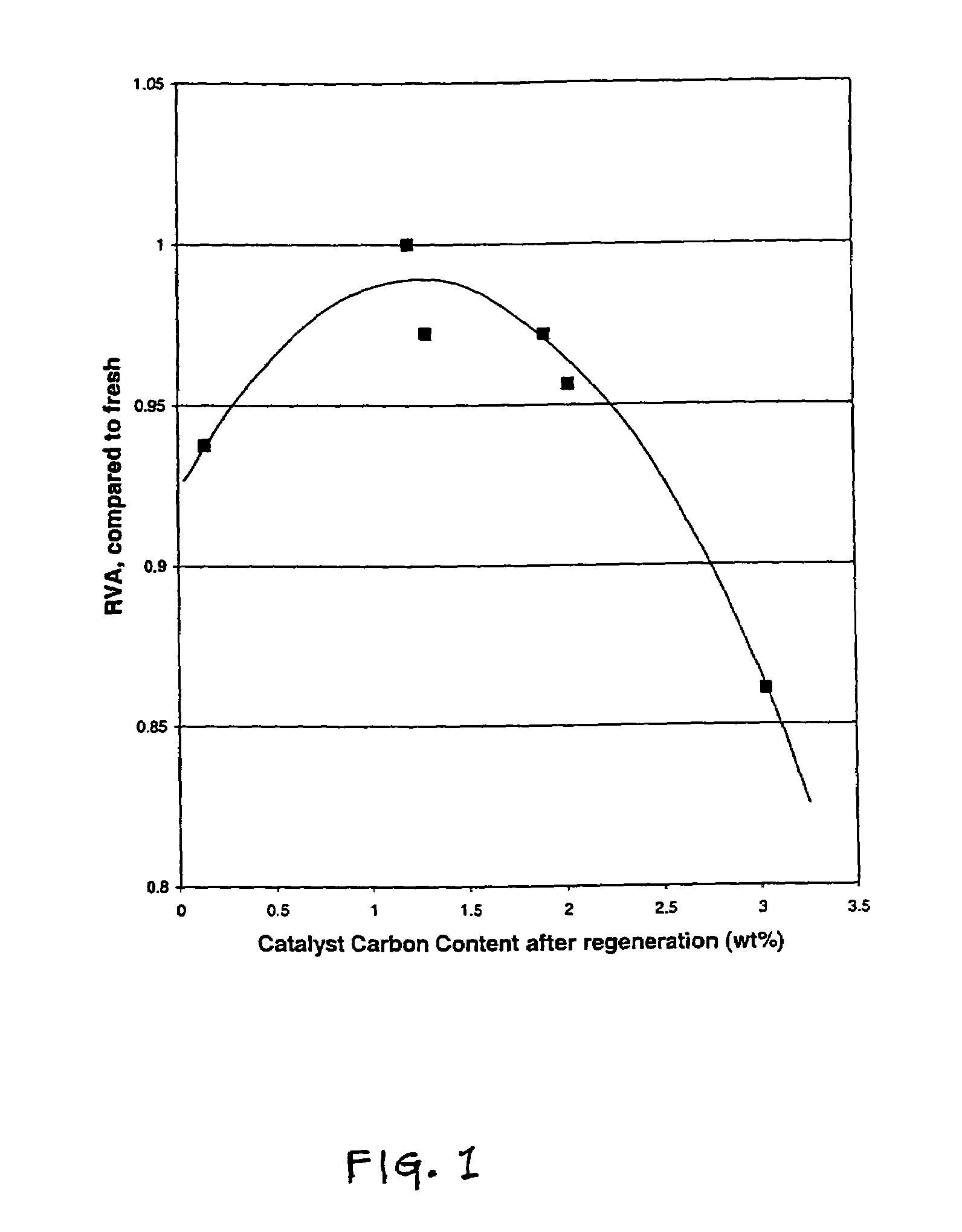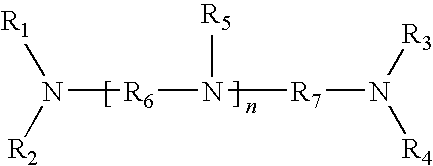Method of restoring catalytic activity to a spent hydroprocessing catalyst, a spent hydroprocessing catalyst having restored catalytic activity, and a hydroprocessing process
a hydroprocessing catalyst and catalytic activity technology, which is applied in the field of restoring catalytic activity to a spent hydroprocessing catalyst having restored catalytic activity, and a hydroprocessing process, can solve the problems of negative change of pore structure, active site, surface area of the catalyst,
- Summary
- Abstract
- Description
- Claims
- Application Information
AI Technical Summary
Benefits of technology
Problems solved by technology
Method used
Image
Examples
example 1
[0086]This Example 1 describes the laboratory method used to revitalize and restore catalytic activity to a commercially available hydroprocessing catalyst that had become spent through its use in the hydrotreatment of distillate feedstock.
[0087]Samples of spent CENTINEL™ DC-2118 high activity hydroprocessing catalyst were obtained from commercial users of the catalyst. CENTINEL™ DC-2118 is a high activity hydroprocessing catalyst that contains hydrogenation metal components of cobalt and molybdenum that are supported on an alumina support and is marketed by Criterion Catalysts & Technologies of Houston, Tex. The carbon concentration of each Sample A, B, C, D, E, F, G, and H respectively is presented in Table 2 below.
[0088]Each sample was subjected to a carbon burn by passing air over the sample at a temperature of less than 400° C. The burning conditions were carefully controlled in order to combust only a portion of the carbon on each sample so as to leave a residual amount of car...
example 2
[0095]This Example 2 describes the laboratory testing procedure and the feedstocks used to test the catalytic activity of the revitalized catalyst samples described in Example 1 relative to the catalytic activity of fresh CENTINEL™ DC-2118 high activity hydroprocessing catalyst.
[0096]The properties of the feeds used in the performance of the activity tests are presented in Table 1. To perform the activity tests, 50 cc of the relevant catalyst sample was placed in a test reactor operated under hydrotreating reaction conditions. The reaction conditions included a reaction temperature of about 355° C., total pressure of 600 psia, a feed rate such that the liquid hourly space velocity was 1 hr−1, hydrogen-to-oil ratio of 1200 SCF / bbl, and an operating time of 500 hours.
[0097]
TABLE 1Feed Properties Used in Activity TestsFEED PROPERTIESFEED AFEED BSulfur, wt %1.831.65Nitrogen, ppm291243Aromatics, wt %12.732.8Density @15.6° C.,0.85340.8531g / ccBromine Number15.74.1TBP (by GC)IBP (° F.)26332...
example 3
[0100]This Example 3 separately presents the results from the activity testing, performed as described in Example 2, of Sample C that was revitalized in accordance with the invention, Sample D that was not subjected to a chelating agent treatment, and Sample E that was treated with a chelating agent but was not aged in accordance with the invention. Table 3 presents the results from this testing.
[0101]
TABLE 3Data Showing the Effect of Aging on RelativeVolumetric Activity of Revitalized CatalystWT. PERCENTCHELANTSAMPLECARBONTREATEDAGINGRVAC1.29YESYES0.97D1.29NON / A0.77E1.29YESNO0.78
[0102]The data presented in Table 3 above demonstrate the improvement in catalytic activity that results from the aging of the carbon-reduced catalyst, having a carbon concentration in the optimal range, when it is treated with a chelating agent followed by aging versus treatment with no aging. The data show that there is a significant improvement in the catalytic activity of the carbon-reduced catalyst whe...
PUM
| Property | Measurement | Unit |
|---|---|---|
| time | aaaaa | aaaaa |
| time | aaaaa | aaaaa |
| weight percent | aaaaa | aaaaa |
Abstract
Description
Claims
Application Information
 Login to View More
Login to View More - R&D
- Intellectual Property
- Life Sciences
- Materials
- Tech Scout
- Unparalleled Data Quality
- Higher Quality Content
- 60% Fewer Hallucinations
Browse by: Latest US Patents, China's latest patents, Technical Efficacy Thesaurus, Application Domain, Technology Topic, Popular Technical Reports.
© 2025 PatSnap. All rights reserved.Legal|Privacy policy|Modern Slavery Act Transparency Statement|Sitemap|About US| Contact US: help@patsnap.com



